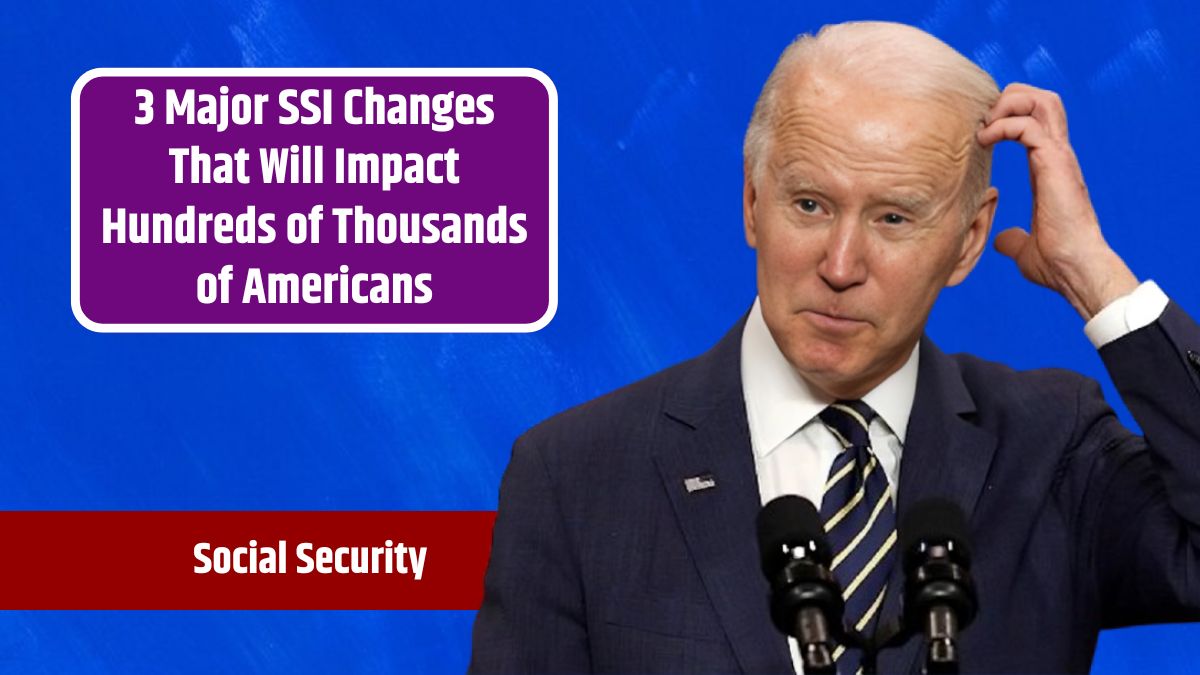The Supplemental Security Income (SSI) program is crucial for millions of low-income Americans, particularly the disabled and vulnerable children. As inflation rises and financial burdens grow, SSI helps these individuals meet essential expenses.
Recently, the Social Security Administration (SSA) announced significant changes that will impact SSI beneficiaries and new applicants. Knowing these changes is vital, as they can directly influence the monthly benefits of hundreds of thousands of people across the country.
Let’s look into the three key changes and how they’ll affect SSI beneficiaries in 2024.
In-Kind Rule
One of the most significant updates involves changes to the In-Kind Support and Maintenance (IMS) rule. Previously, if a friend or family member provided you with food, the SSA would count this as support when determining your SSI eligibility, potentially reducing your benefits. However, under the new rule, food assistance from others will no longer count against your SSI eligibility.
This adjustment is expected to benefit over 90,000 people by increasing their monthly SSI payments by about $131. This change eases the burden for families who might rely on others for help, especially in today’s economic climate, where grocery costs continue to rise.
Rental Waiver
The second major change extends the rental subsidy exception. Previously, this exception was only available in seven states, but it is now extended to all states nationwide. Under this rule, those receiving rental subsidies, such as public housing or Section 8, are no longer penalized for receiving this assistance when applying for SSI.
For nearly 41,000 people, this rule change could mean a monthly SSI payment increase of around $132. With housing costs soaring in many parts of the country, this expansion will make SSI benefits more accessible and meaningful for people receiving rental assistance, giving them more financial breathing room.
Public Assistance Household
The third update relates to the definition of a public assistance household. The SSA has simplified the rules regarding households that receive public assistance, such as Supplemental Nutrition Assistance Program (SNAP) benefits. Previously, every member of a household had to be on public assistance for the household to qualify under the SSI program. This restriction has been lifted.
By broadening the definition of a public assistance household, about 277,000 people are expected to become newly eligible for SSI benefits. Additionally, this change will simplify the reporting requirements for those living in public assistance households, reducing administrative burdens and helping applicants receive their benefits faster.
Changes
These updates are more than just bureaucratic tweaks—they could increase your SSI payments significantly or make you eligible for the first time. If you’re currently receiving food assistance or living in subsidized housing, these new rules could mean more money in your pocket every month.
Additionally, these changes open the door for thousands of people who were previously excluded from SSI eligibility due to outdated rules. This is particularly important for low-income families and disabled individuals who rely on government assistance to make ends meet.
What Should You Do Next?
If you’re considering applying for SSI or if you’re already receiving benefits, it’s a good idea to review your eligibility based on these new changes. Consulting with a financial advisor or a Social Security expert can help ensure you maximize your benefits. They can guide you through the application process or help you understand how these changes might boost your monthly payments.
Keep in mind that Congress still sets asset limits for SSI eligibility, and while the SSA can make some regulatory adjustments, these limits haven’t been updated since 1989. Advocates continue to push for further reforms, but for now, these three changes can make a substantial difference for many Americans.
The SSA’s goal with these updates is to reduce barriers to the SSI program and provide more accessible support for low-income individuals and families. Whether you’re a long-time SSI recipient or a first-time applicant, these changes are designed to help you meet your financial needs more effectively.
Summary
| Change | Benefit | Estimated Impact |
|---|---|---|
| In-Kind Support Rule | Removes penalty for receiving food assistance | 90,000+ people, $131 monthly increase |
| Rental Subsidy Exception Expansion | Extends exception to all states | 41,000+ people, $132 monthly increase |
| Public Assistance Household Rule | Broadens household eligibility | 277,000+ newly eligible |
If you believe these changes could affect you or someone you know, now is the time to act. The SSA’s updates are geared toward making the system fairer and more accessible for the people who need it the most.
FAQs
What is the new in-kind support rule change?
The SSA no longer counts food assistance when determining SSI eligibility.
Who benefits from the rental subsidy expansion?
Applicants in all states can now receive SSI without being penalized for rental assistance.
How does the public assistance household rule change help?
It broadens the definition, increasing eligibility for over 277,000 people.
Will these changes affect my current SSI payments?
Yes, many people could see an increase of up to $132 in their monthly SSI payments.
Should I consult an expert about these changes?
Yes, a financial advisor or Social Security expert can help maximize your benefits.






